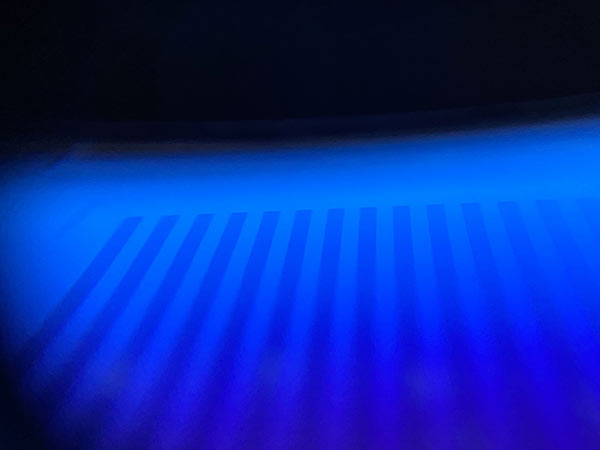Thin film removal is an extremely precise process that exploits selective laser ablation to remove micro- and nanoscale layers from the surfaces of different substrate materials. Though ‘thin’ is a relative term, it typically concerns films ranging from fractions of a nanometer (nm) to just a few micrometers (μm) in thickness. At these scales, deformation and failure mechanics dominate when using abrasive machining methods.
What are Thin Films?
Thin films are layers of material that are found on surfaces of substrates, typically causing the interface to behave differently than the bulk material. Oxidation is perhaps the best known natural occurrence of thin film formation. Certain metals, like titanium (Ti), react with oxygen in the atmosphere upon exposure to air and is often influenced by heat. This forms a planar coat of titanium oxide (TiOx) across the surface, protecting the bulk material from further corrosion. We refer to this natural form of thin film formation as passivation.

Understanding Thin Film Removal
Understanding natural thin film formation has enabled engineers to replicate similar conditions in industrial and laboratory environments. We are now able to generate structural thin films on a wide range of substrate materials using an array of techniques, from chemical bath deposition (CBD) to ion-beam sputtering (IBS). These are increasingly prevalent in industrial applications, forming the basis of flat-panel displays, microelectronic devices, smart glass coatings, and more.
Despite the availability of many deposition techniques, thin film machining has proven to be a bottleneck for many applications. Selective thin film removal is important for generating coatings with finely-tuned characteristics. As mentioned, mechanical abrasion (i.e. scribing) is associated with poor precision and high degrees of interfacial failure. Photolithography has been used successfully for a range of film materials, but this is a complex multi-phase process requiring high investment costs.
Fiber-chirped pulse amplification – often abbreviated to FCPA – is an innovative technique used to produce sub-picosecond (i.e. short) highly energetic laser pulses. It was the culmination of extensive research into creating shorter and shorter laser pulses of higher peak powers, exceeding solid-state lasers in virtually every capacity. With extremely high peak power and pulse lengths in the femtosecond regime, FCPA lasers can localize laser energy exclusively to certain surface areas. This enables highly selective vaporization of different materials with negligible thermal side-effects; which is of critical benefit for thin film removal.
Thin Film Removal in Optoelectronics
Femtosecond lasers have subsequently been identified as a necessary technology for thin film removal and patterning of thin coatings on a wide range of substrates. Indium tin oxide (ITO) films and electrochromic films on glass are two application areas for FCPA thin film removal. Additionally, with the capability for sub-surface modifications and high interfacial selectivity, femtosecond lasers can be employed for thin film removal of a virtually limitless range of materials.
Selectively removing thin films from substrates enables engineers to create precise patterns which can be used as circuitry in optoelectronic devices. Typical uses of femtosecond thin film removal include solar cell patterning, liquid crystal display (LCD) manufacturing, and the manufacturing of touch-sensitive panels.
Thin Film Removal with IMRA
IMRA is one of the industry leaders in FCPA femtosecond laser technology. If you would like to learn more about thin film removal with one of our unique industrial solutions, simply contact a member of the IMRA team today.


